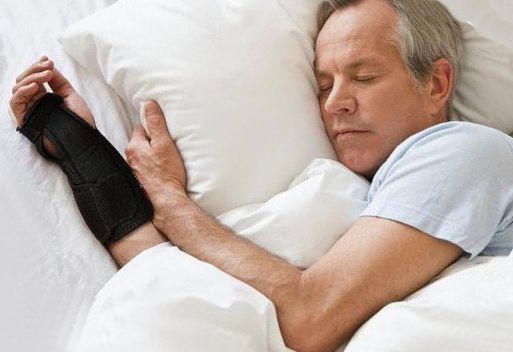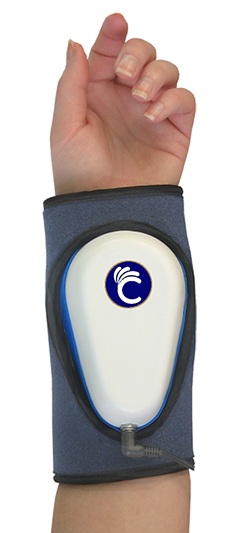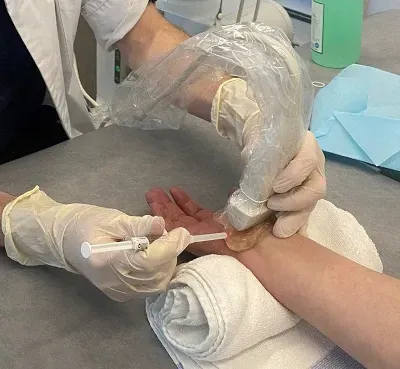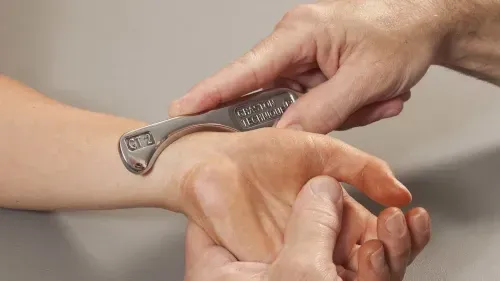Alternative Treatments for Carpal Tunnel
Table of Contents
- Overview
- Understanding Carpal Tunnel Symptoms & Treatments
- The Goal of All Carpal Tunnel Treatments
- Alternative Treatments for Carpal Tunnel
- CarpalRx Myofascial Release Massager
- Hydrodissection of the Median Nerve
- Graston Technique on the Forearm
- When to Speak With Your Doctor
- Summary
- FAQs
- About
Overview
Carpal tunnel syndrome (CTS) occurs when swelling in the wrist compresses the median nerve, causing tingling, numbness, and weakness in the hand. Early treatment is key before symptoms become permanent.
Why Alternative Treatments Matter
Every effective treatment aims to relieve pressure on the median nerve. While surgery is one option, most experts — including the
American Academy of Orthopedic Surgeons (AAOS) — recommend trying non-surgical methods first.
1. CarpalRx Myofascial Release Massager
This home-use device gently massages the wrist and forearm to break up scar tissue, improve circulation, and reduce inflammation. Used 15 minutes daily, it often brings relief within 30–60 days. Studies report success rates as high as 97% in moderate to severe cases.
2. Hydrodissection of the Median Nerve
A medical procedure where fluid is injected around the nerve to release tight tissue. It’s quick (about 20 minutes) and less invasive than surgery, with 60–88% success rates. However, results may be temporary and depend on the provider’s skill.
3. Graston Technique
A therapist uses a metal tool to massage the wrist and forearm, breaking down adhesions and improving movement. Treatments last about 10 minutes and can achieve 70–90% success. Mild soreness or redness afterward is common but short-lived.
When to Seek Professional Help
If numbness, weakness, or pain keep worsening — or if these methods don’t help — consult a physician. CTS can progress over time and may cause lasting nerve damage if ignored.
Key Takeaway
Before considering surgery, explore these proven alternatives. They’re designed to reduce pressure on the median nerve safely, naturally, and often very effectively.
Understanding Carpal Tunnel Symptoms & Treatments
Carpal tunnel syndrome often begins with
pain,
numbness,
burning, or tingling in the palm and first four fingers (excluding the pinky). Symptoms usually appear at night, especially while sleeping. As the condition progresses, they also occur during the day — interfering with ordinary tasks like gripping, typing, or holding objects.
When that happens, symptoms tend to worsen quickly. You may notice hand weakness, clumsiness, or even sudden
shooting electric shock sensations when trying to grasp something.
Because carpal tunnel syndrome is progressive, it’s best to begin treatment as early as possible. Unfortunately, many people wait until daytime symptoms appear — when nerve irritation is already more advanced and surgery may start to be considered.
However, the American Academy of Orthopedic Surgeons (AAOS) advises trying non-surgical remedies first, since most patients improve with conservative care. Common non-surgical treatments include:
- Pain-relief medications
- Resting the hands and fingers
- Modifying repetitive activities
- Wearing a night splint
- Gentle stretching exercises
- Myofascial release massage
- Corticosteroid injections
If these traditional approaches don’t bring lasting relief, several alternative treatments have shown strong success rates, including:
- CarpalRx automated myofascial release massager
- Hydrodissection of the median nerve
- Graston technique on the forearm
These methods focus on relieving pressure on the median nerve without surgery, often restoring comfort and strength safely and naturally.
The Goal of All Carpal Tunnel Treatments
Carpal tunnel syndrome occurs when tissues in the wrist become swollen and press on the
median nerve, causing pain, numbness, tingling, and weakness.
The goal of every treatment — surgical or not — is to
relieve pressure on that nerve. Surgery does this by cutting the tight band that holds wrist bones together, giving the nerve more space. But it’s a last resort due to recovery time, pain, and only about
50-60% success rate.
Non-surgical treatments work by reducing swelling and irritation naturally, creating the same “breathing room” for the nerve — which is why most experts recommend trying them first.
3 Alternative Treatments for Carpal Tunnel
1. CarpalRx Myofascial Release Massager
2. Hydrodissection of the Median Nerve
3. Graston Technique on the Forearm
When to Speak With Your Doctor
The last thing you need is for carpal tunnel syndrome to advance and worsen. Remember, it's a progressive disorder that just won't stop by itself. So if you don't treat it, you can expect irreversible loss of sensation, strength, and dexterity.
Simple non-surgical remedies work very well. But sometimes they are too little too late. Therefore, if your symptoms are mild and not bothering you much during the day, the the above non-surgical alternative treatments will probably work well. If symptoms are worse, then consult with your doctor to make sure you take the treatment path that's right for you. In all cases, talking with your doctor and addressing the matter as soon as possible is best.
Summary
There are three leading alternative treatments for carpal tunnel syndrome: CarpalRx therapy, hydrodissection, and the Graston technique.
CarpalRx therapy uses a home medical device that precisely mimics a therapist’s fingers to deliver myofascial release massage—a clinically proven method for relieving carpal tunnel symptoms. It boasts a remarkable 97% success rate in reducing pain, numbness, and tingling.
Hydrodissection is a minimally invasive procedure performed by a physician. Guided by ultrasound, a fine needle injects fluid around the median nerve, releasing it from surrounding scar tissue and adhesions. Reported success rates range from 60% to 88%.
The Graston technique is performed by a trained therapist using a smooth metal tool to stretch and mobilize soft tissue in the wrist and forearm. This technique promotes better mobility and reduced nerve pressure, with success rates between 70% and 90%.
FAQs
1) So which alternative treatment for carpal tunnel is best?
Each treatment offers a good rate of efficacy. But the CarpalRx is the only in-home treatment you can do by yourself.
2) How effective is CarpalRx therapy?
The CarpalRx has a success rate of 97% effectiveness. It even works in those with severe symptoms.
(Check your severity here.)
3) Can I do myofascial massage at home without the CarpalRx?
Yes, but you cannot do it on yourself. You need a partner because it requires two thumbs.
Learn how they can to do it here.
4) How effective is hydrodissection?
It has a success rate of 60-88%.
5) How effective is the Graston technique?
It has a success rate of 70-90%, but efficacy is highly dependent on the practitioner's skill and experience.
6) Can I do the Graston technique at home?
Yes, but you won't be able to do it
well
if you don't have the proper training and experience
About








